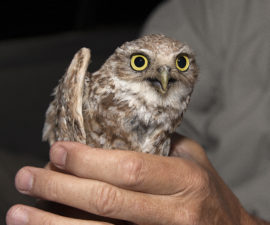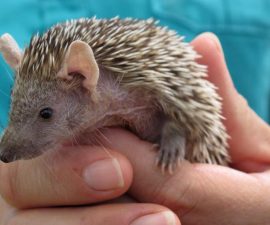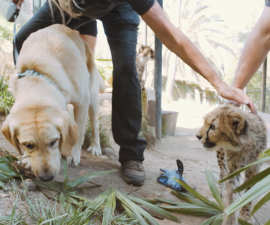Each animal move is a collaborative, colossal, often complicated effort with animal safety at its core.
BY Karyl Carmignani
Photography by Ken Bohn
Animals in accredited zoos are transported for a variety of reasons: Association of Zoos and Aquariums’ (AZA) Species Survival Plan (SSP) breeding recommendations, zoo acquisitions, species social factors, space availability, release back into a historic range, or expiring animal loan agreements. Whether it’s a passport-packing international trip, a cross-country trucking journey, or a 45-minute jaunt between the San Diego Zoo and the Safari Park, every animal move is carefully planned, documented, and orchestrated by a squad of talented people, each bringing their own expertise to ensure the animal arrives safely. Curators, managers, veterinarians, keepers, and shipping curatorial registrars all work together. Preparation can take months or even years.
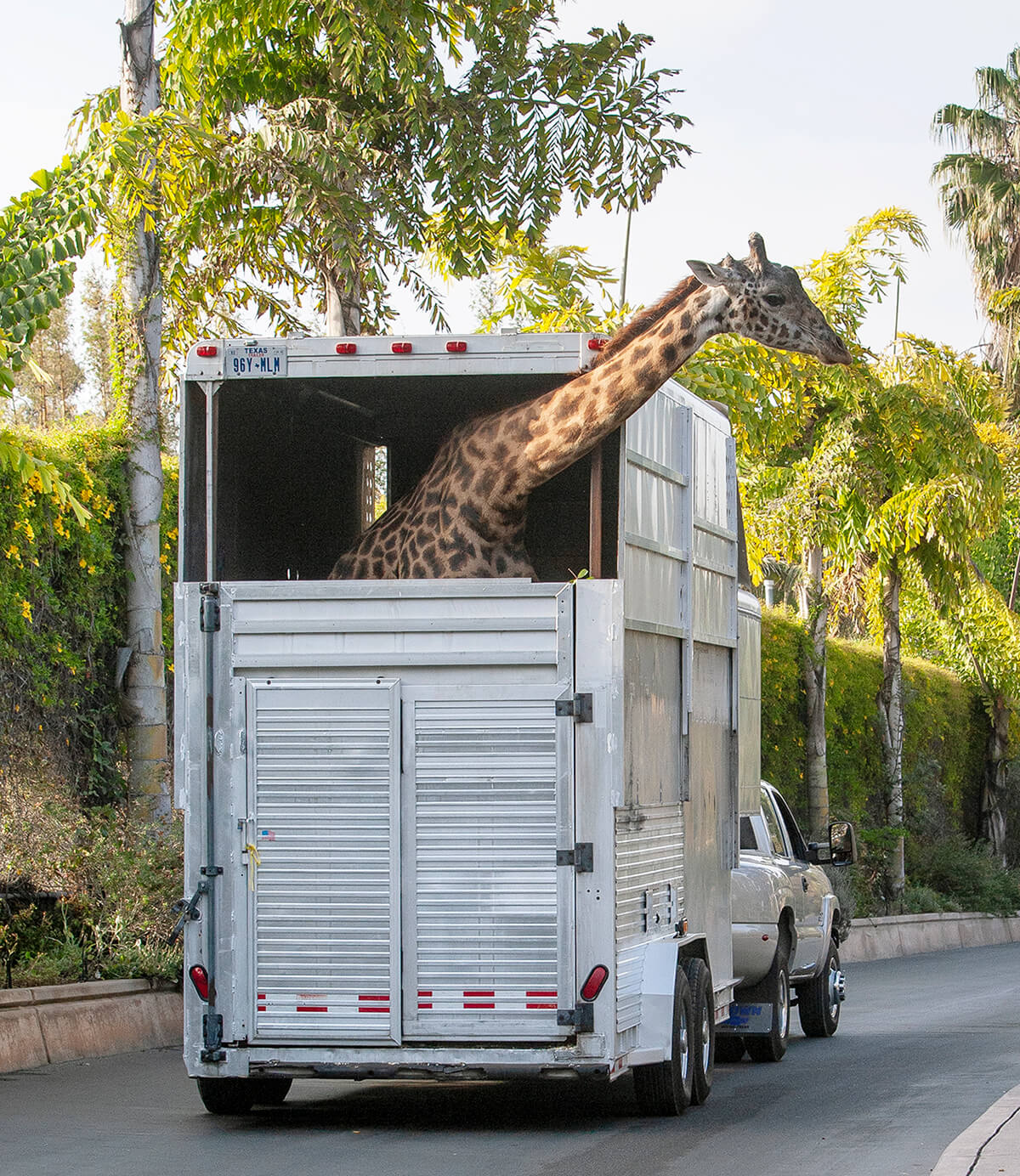
TALL ORDER
Special care is taken when moving giraffes, for obvious reasons. Many seem to enjoy the ride!
“The primary reason to transport animals is sustainability, animal well-being, and to move genetics around,” explained Carmi Penny, director of Collections Husbandry Science at the San Diego Zoo. “It takes a hardworking, well-trained village” to make it happen. Considerations with an animal move include acclimating the animal to its mobile space, veterinary health exams, securing permits and airline tickets or other transport, monitoring the animal(s) in transit, shipping regulations and safety precautions, recent births, and even the weather on both ends of the move as well as in transit, among countless other details.
Moving In, Moving On
AZA administers SSPs for certain species, and makes breeding recommendations to zoos to ensure healthy, sustainable, genetically diverse populations in North America. If curators are in agreement, resources are available, and the organizations are prepared, a cascade of paperwork and permissions begins. The range of permits is determined by the species’ Endangered Species Act status and CITES listing, type of transport, and, of course, destination. Not surprisingly, international shipments have more paperwork and particulars than national or regional moves.
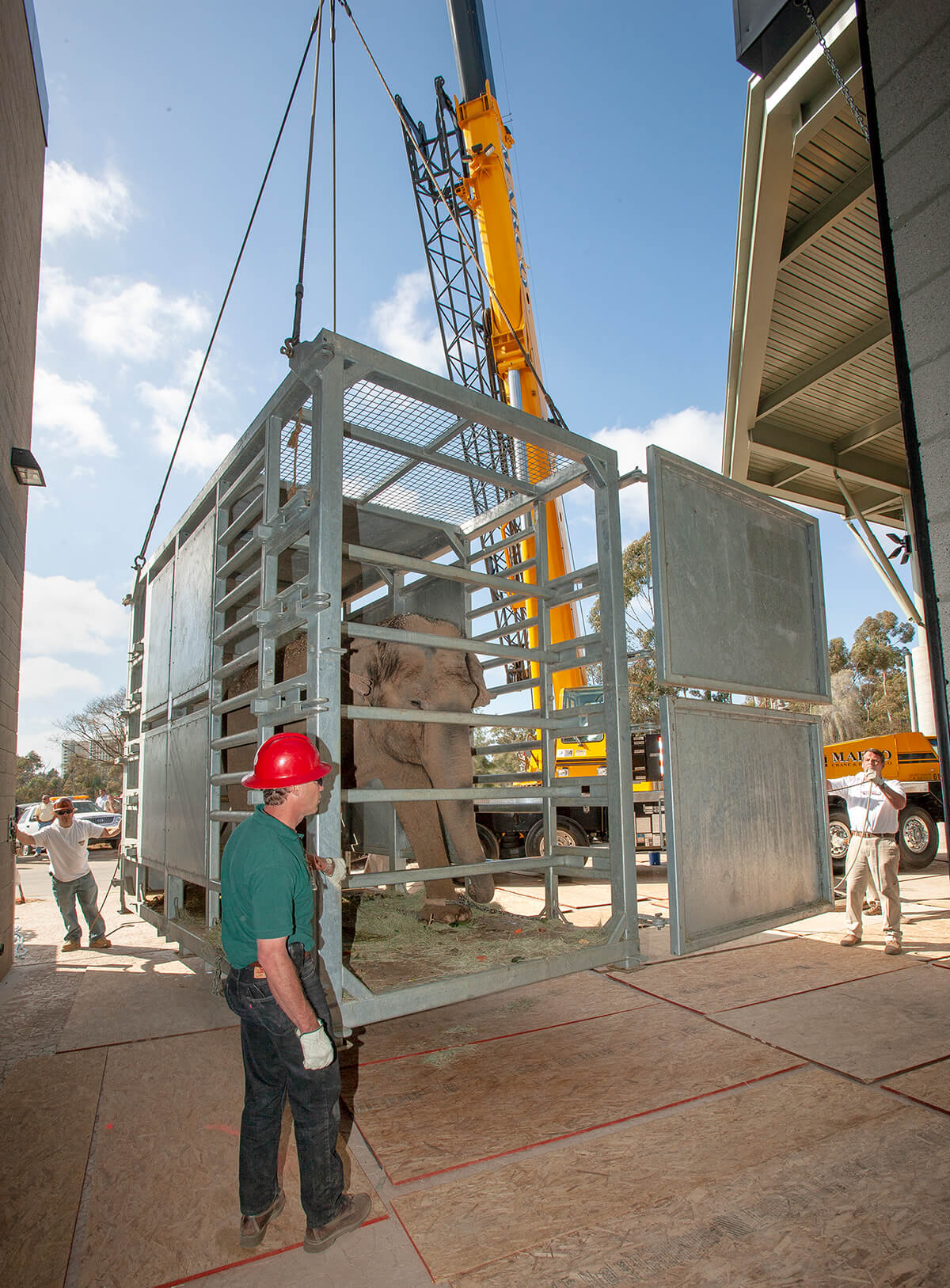
HEAVY-DUTY TRANSPORT
Large animals like elephants require special extra-sturdy, well-ventilated travel crates and may use cranes as part of the journey.
A species’ social structure may lead to a move. For instance, a large population of male animals, which may not get along as adults, can mean they would thrive better if moved to places that could provide potential mates and space to form a more natural community. Think gorillas, elephants, and lions.
Sometimes, our collaborative conservation efforts have reached the milestone of repatriating a species to its historic habitat. Working with partners, San Diego Zoo Global has been able to help many species recover from a brush with extinction. Programs to breed, nurture, and release species include California condors, Pacific pocket mice, Quino checkerspot butterflies, and mountain yellow-legged frogs, among others.
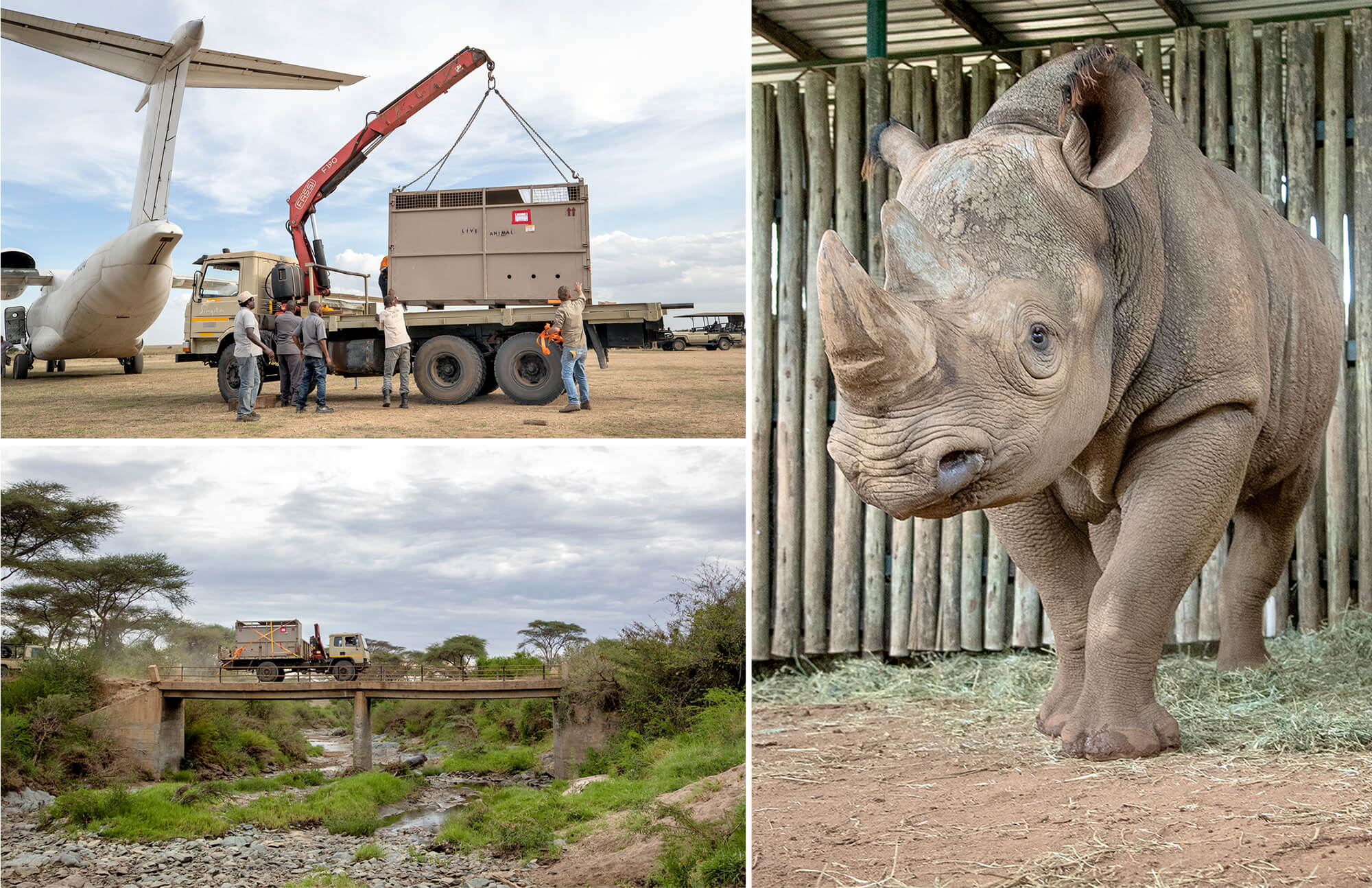
GOING HOME
Eric the East African black rhino was moved to Tanzania for breeding purposes. The journey was complex logistically, but he made it safe and sound.
One “huge” repatriation move was for Eric, an eight-year-old East African black rhino, who was moved last fall from the Safari Park to Tanzania to promote breeding of this critically endangered species within the greater Serengeti ecosystem. After months of preparation and tests to make sure the animal was healthy, the 2,550-pound rhino made a safe passage to Africa. “He was eating well along the journey, and he arrived safely and settled in quickly,” said Steve Metzler, Henshaw curator of mammals, San Diego Zoo Safari Park. “I couldn’t have asked for a better outcome.” Eric’s genes are well represented in the population of black rhinos in North American zoos, so he was a great candidate for translocation to Africa, where he will add genetic diversity to wild populations.
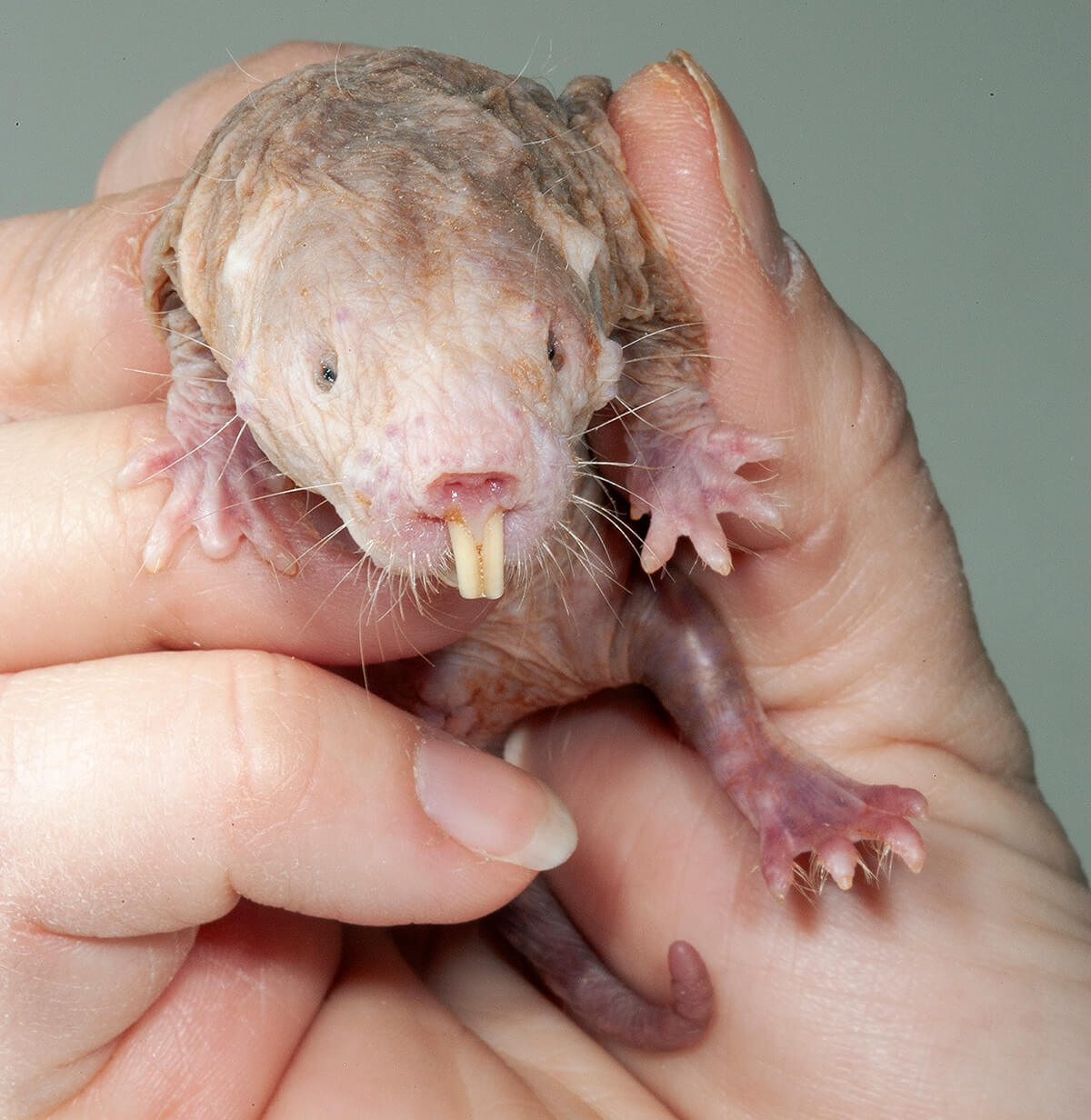
MISS NOMER
Neither naked nor rat, the naked mole-rat was a challenge to ship, but eventually got a flight. Who could resist that face?
An animal’s species name may hinder travel plans. One airline balked when the San Diego Zoo tried to ship naked mole-rats to another zoo. “They did not want ‘rats’ of any kind on the aircraft,” said Leticia Sica, curatorial registrar. Eventually, Leticia convinced them that the animals are “mostly blind and very sensitive” and would be secured in a custom-built crate. The tiny, hairless rodents were allowed to fly!
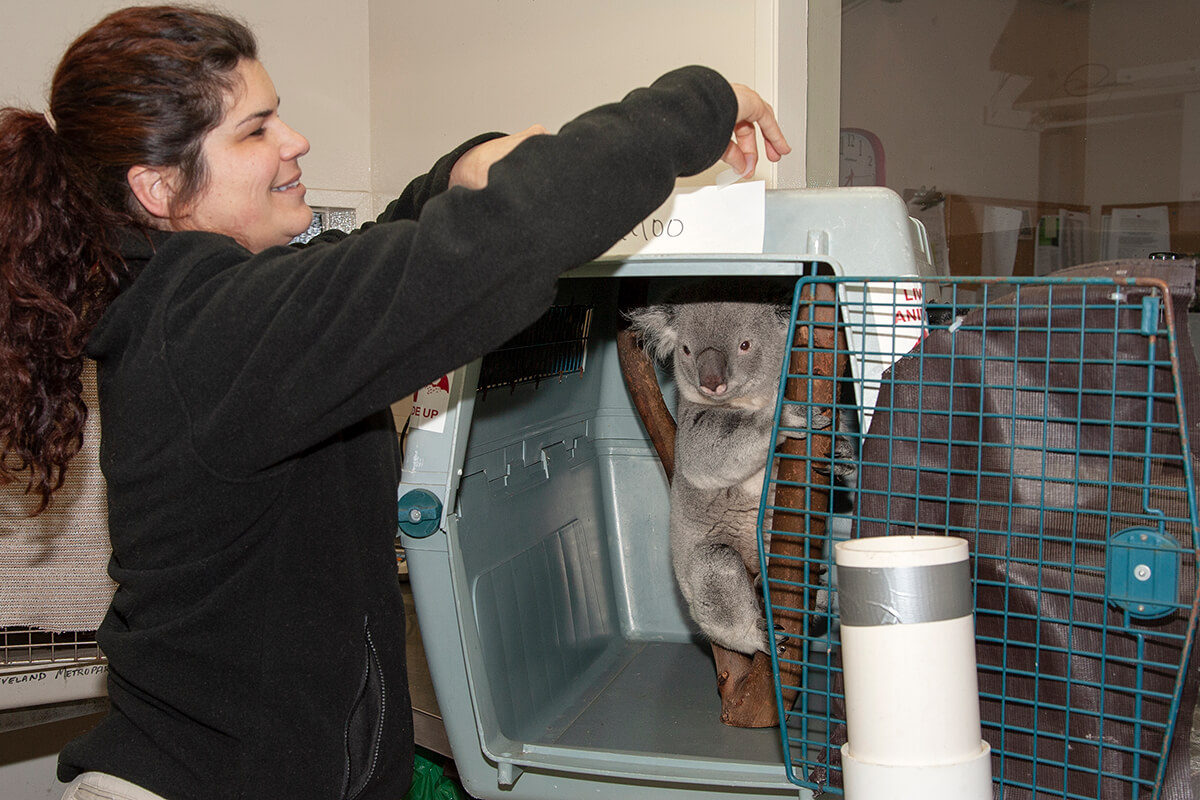
HIGHLY KOALA-FIED
Some animals prefer a cozy crate where they can position themselves as they naturally would, like this koala happily latched upright onto a wooden perch.
Land transport within the US has its perks. Regulators are less strict with the hay used as bedding or food, noted Leticia. International shipments either forbid it (shredded paper is used for bedding instead) or require it to be destroyed at the port of entry. But there’s still crucial paperwork, including a “property pass” for the animals to leave, and a USDA 7020 form that is filled in upon safe arrival.
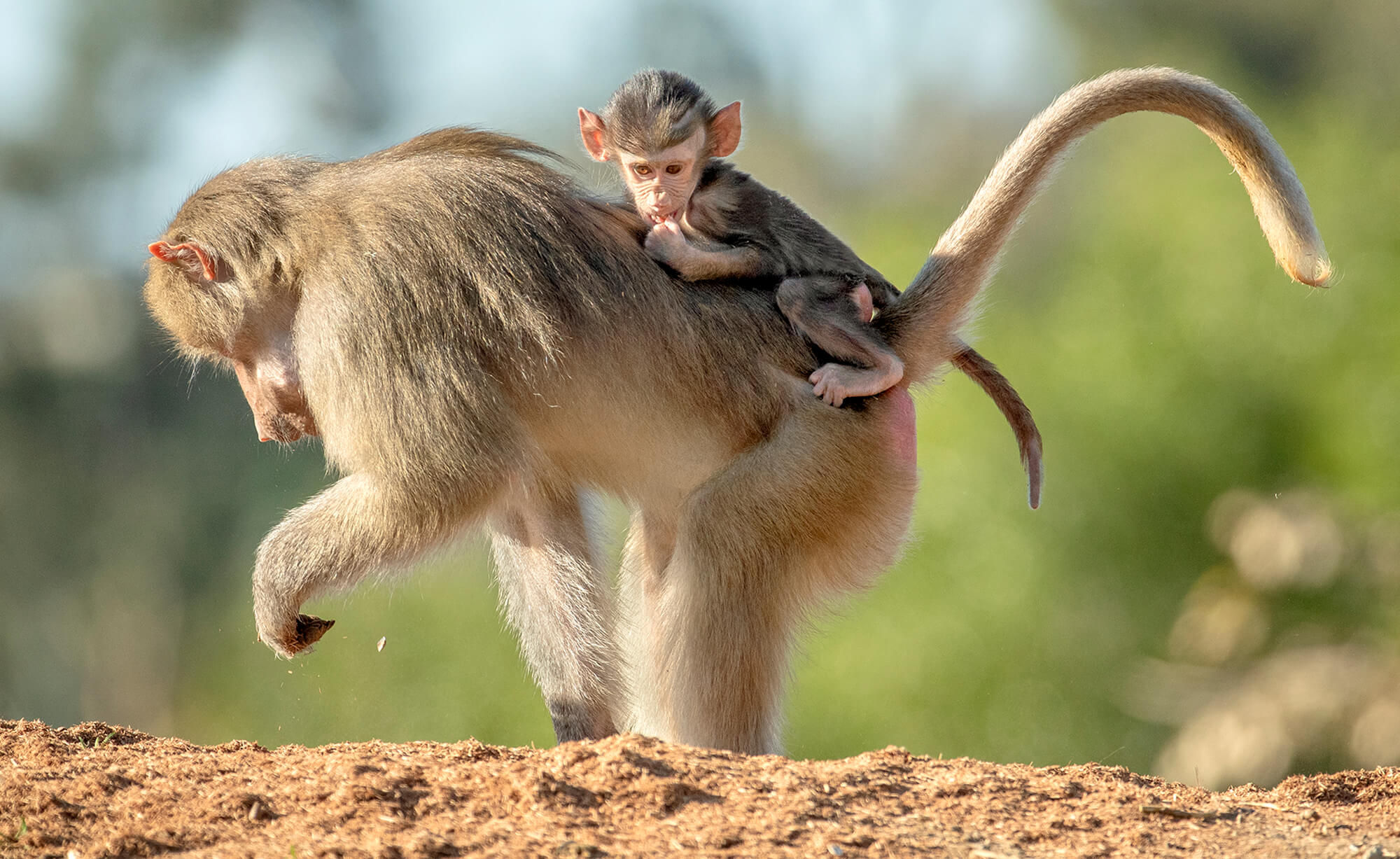
Monkey Moves
Occasionally, animal moves are mind-bogglingly complicated. It took nearly seven years to complete the import of a group of hamadryas baboons from the Frankfurt Zoo in Germany to the San Diego Zoo for the new Africa Rocks Ethiopian Highlands exhibit. In early 2010, the SSP noted a suitable breeding group of baboons in Europe for the dynamic, spacious exhibit. While the architects built the exhibit explicitly for this species, Dean Gibson, curator of primates at the Zoo, began a years-long juggling act. Permits, airlines, regulations, weather, ground transport, designated import ports, and quarantine sites were all ongoing considerations. Even baboon births came into play—as the process continued, the monkeys had additional offspring. “Primate export permits are valid for up to six months,” explained Dean. “You cannot ship nursing infants or pregnant females past the first trimester, so if a monkey has a baby, we need to wait until the youngster is eating sufficient solids to complete the shipment. For a baboon, this is a minimum of six months, during which time the permit would likely expire, so the process begins again.”
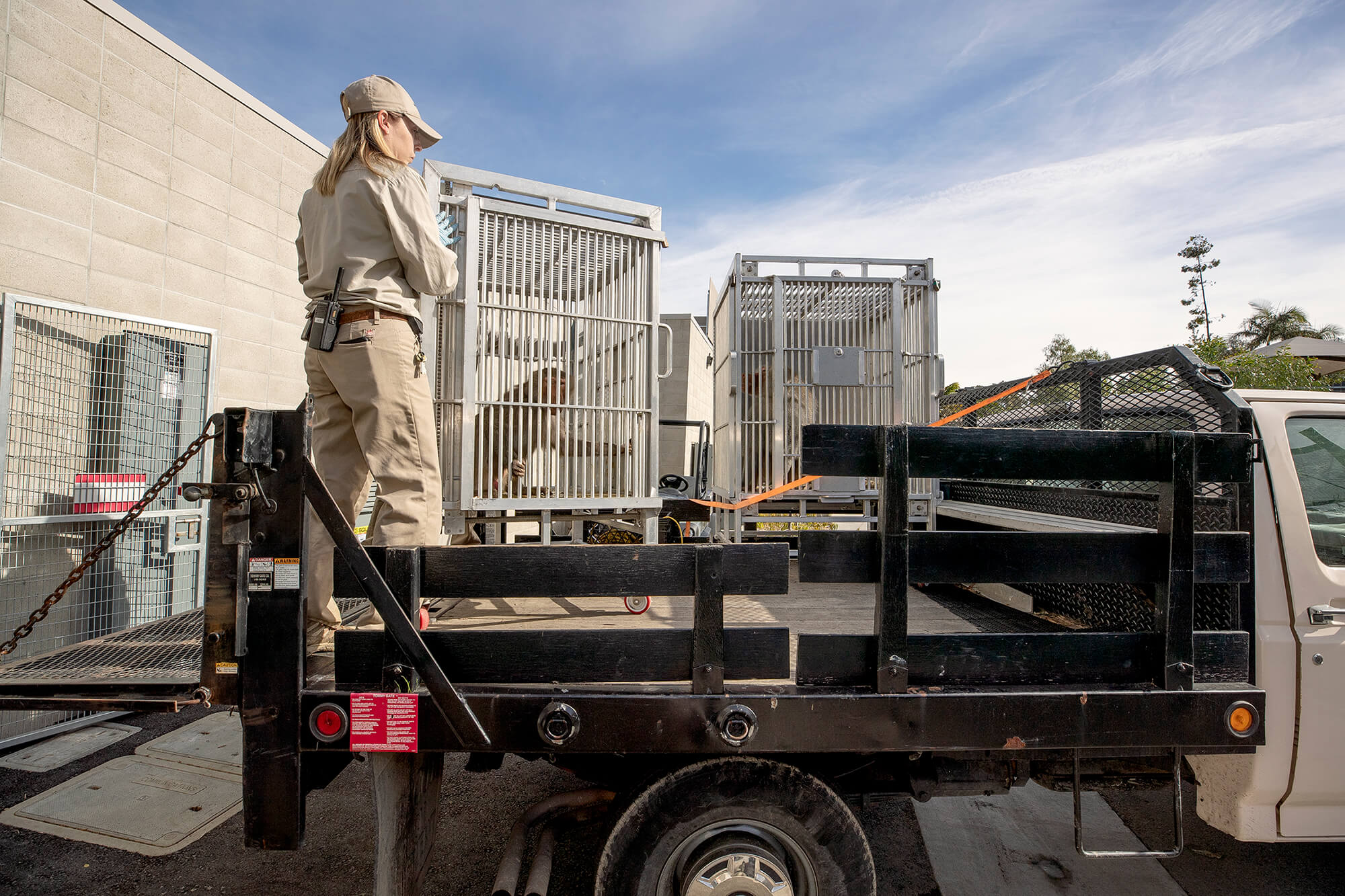
HOME STRETCH
After quarantine, the group of hamadryas baboons was carefully transported to the Zoo to join Africa Rocks.
Another challenge was the shipping crates for the animals. Dean had shipped 17 SDZG primate crates to Germany that were thought to meet US and International Air Transportation Association (IATA) standards, but then found out they didn’t meet Germany’s understanding of the IATA guidelines. For instance, they required handles on each crate; slats instead of openings on the bottom; different-sized ventilation holes; metal support framing; and other specifications. In 2015, Don Everett, head welder at the Zoo, made a proto-crate “to the letter of the law” and it was sent over. Once approved, he made 17 more custom crates. While all this was happening, and Dean was coordinating with the Center for Disease Control (the CDC is always involved in international primate shipments) and U.S. Fish and Wildlife Service, another monkey was born. The original permit was for 14 hamadryas baboons. When they finally arrived in San Diego, there were 19 monkeys in the band!
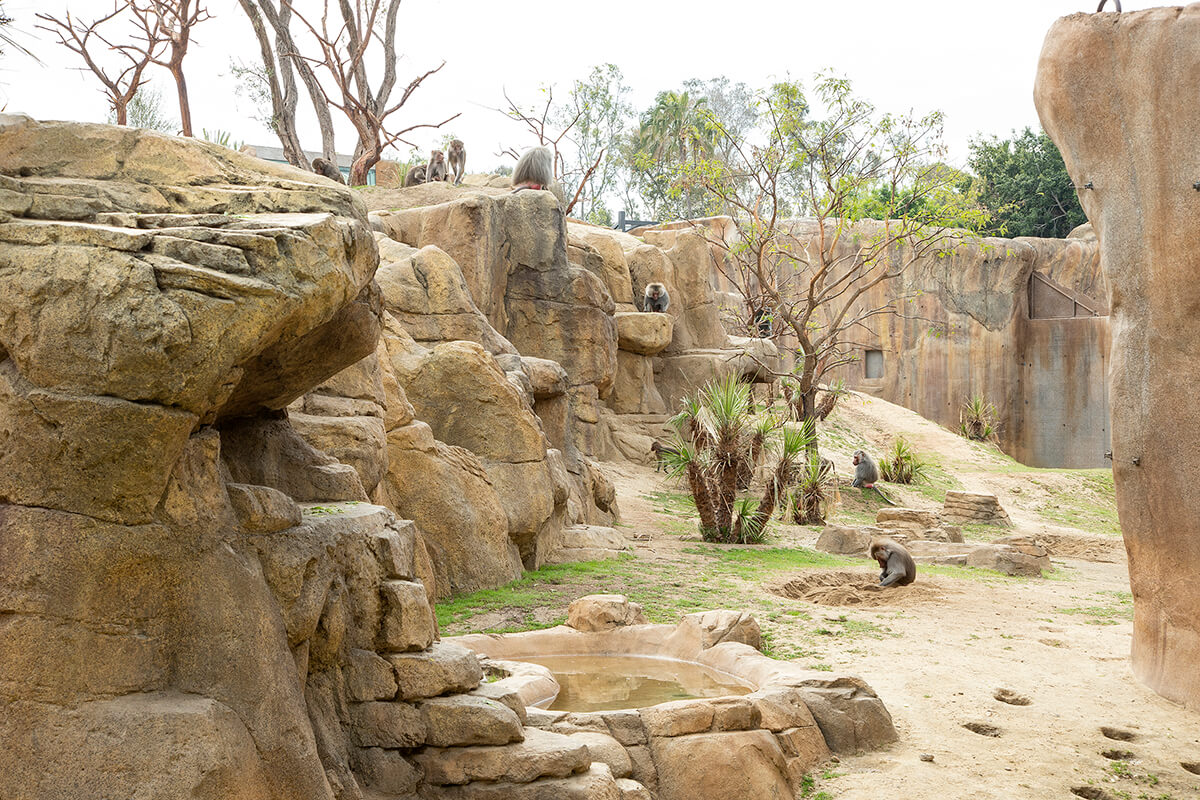
AFRICA REALLY ROCKS, NOW!
The baboons had a lot to explore in their new digs. The exhibit was designed with their natural behaviors in mind. The craggy escarpments emulate their wild habitat and there’s plenty of room to roam and sort out social dynamics.
With such a large number of baboons, they had to be split up for CDC-approved quarantine sites in the US: one group went to a facility outside California, while the others were quarantined at the Safari Park. Finally, on November 28, 2017, all the monkeys were actively exploring their new digs in Africa Rocks, and they made the most of it. The monkeys were gleefully digging up the newly planted seedlings, climbing up the escarpment, chasing each other, and sorting out their social structure. “Elvis, the 19-year-old leader, did everything appropriate to hold the group together for the journey,” said Dean. “I got a few gray hairs during the process, but it was totally worth it.” The baboons are thriving and living out their dynamic social relationships—and you can watch them on the Zoo’s Baboon Cam on our website. Stay tuned!


